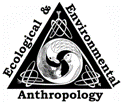Wildlife Damage Management, Internet Center for
Date of this Version
November 2006
Abstract
The northern muriqui (Brachyteles hypoxanthus) is endemic to Brazil’s Atlantic Forest, and it ranks among the most critically endangered primates in the world. Roughly 25% of the species is found in the 957 ha forest at the Estação Biológica de Caratinga/RPPN-Feliciano Miguel Abdala, in Minas Gerais, Brazil. The long-term research and conservation efforts at this site have received considerable attention, and public awareness and educational campaigns about northern muriquis have been highly effective. Nonetheless, very little about the human dimensions of these efforts have been explicitly described. In this paper, we focus on three distinct, but interconnected dimensions: i) the role of training Brazilian students on the research to build local capacity; ii) the multiple levels of interactions among researchers and different spheres of the local farming community, which have extended over time from the family that owns the farm on which the forest is situated, to the families that work on this farm, to the farmers who live and work in the surrounding community; and iii) the development of partnerships involving national and international nongovernmental organizations and the Brazilian government. We conclude by describing the synergist interactions between each of these human dimensions, which have contributed to both the research and conservation of northern muriquis at this site. We also consider the ways in which some of the specifics of this particular “case study” might be applicable to other species of primates elsewhere.

